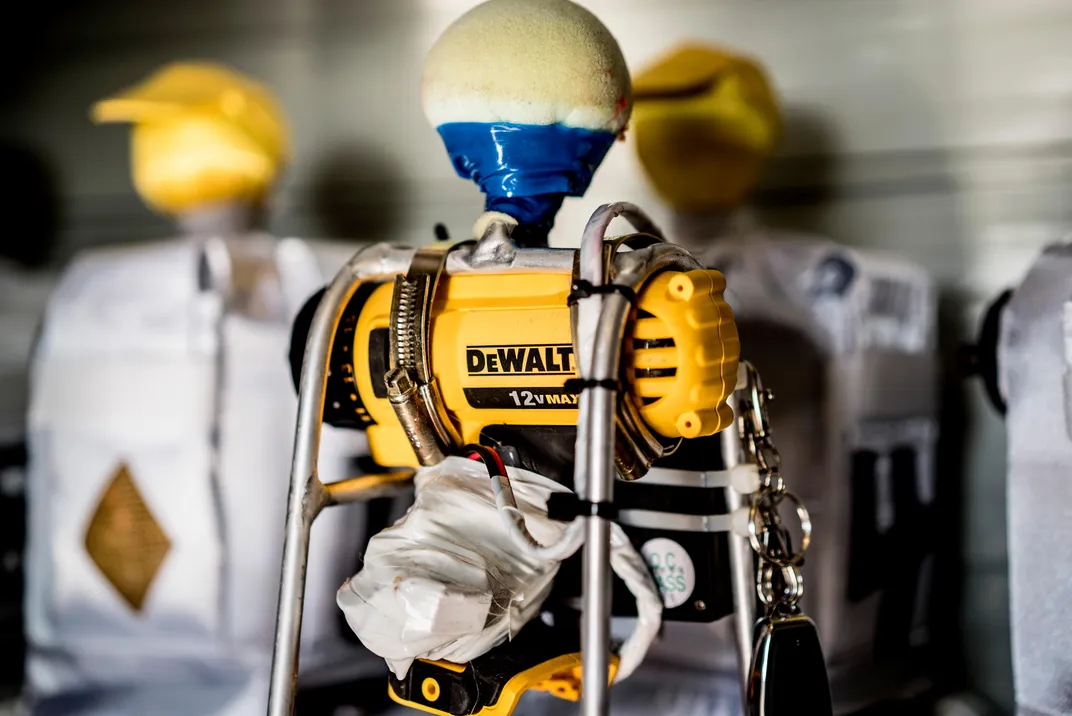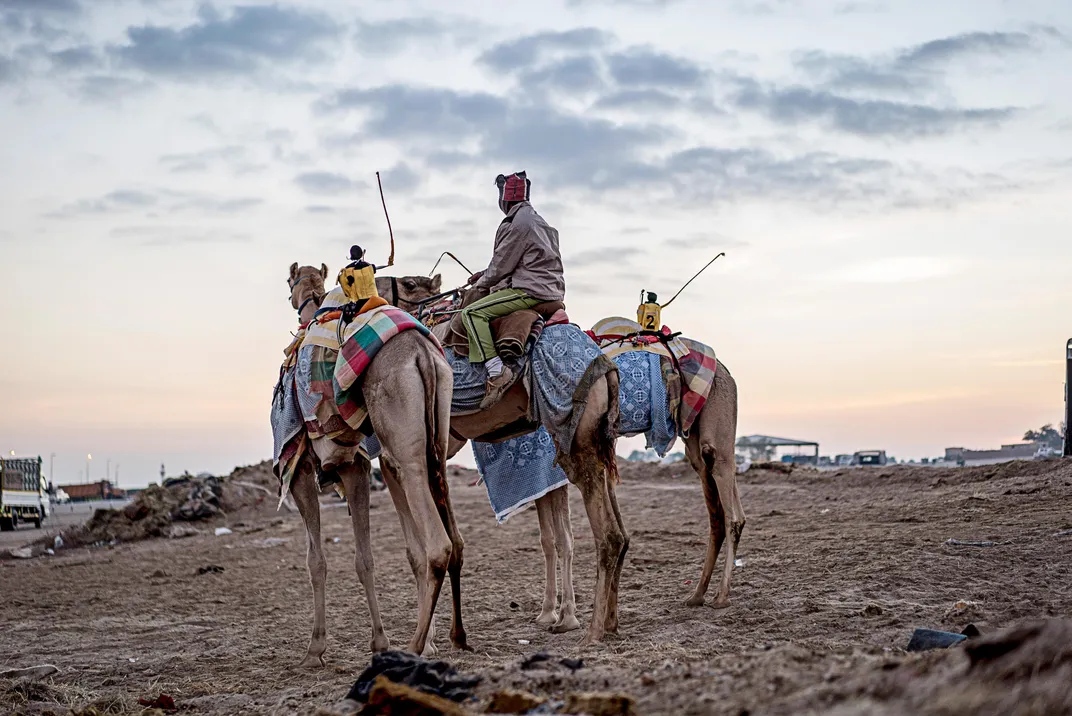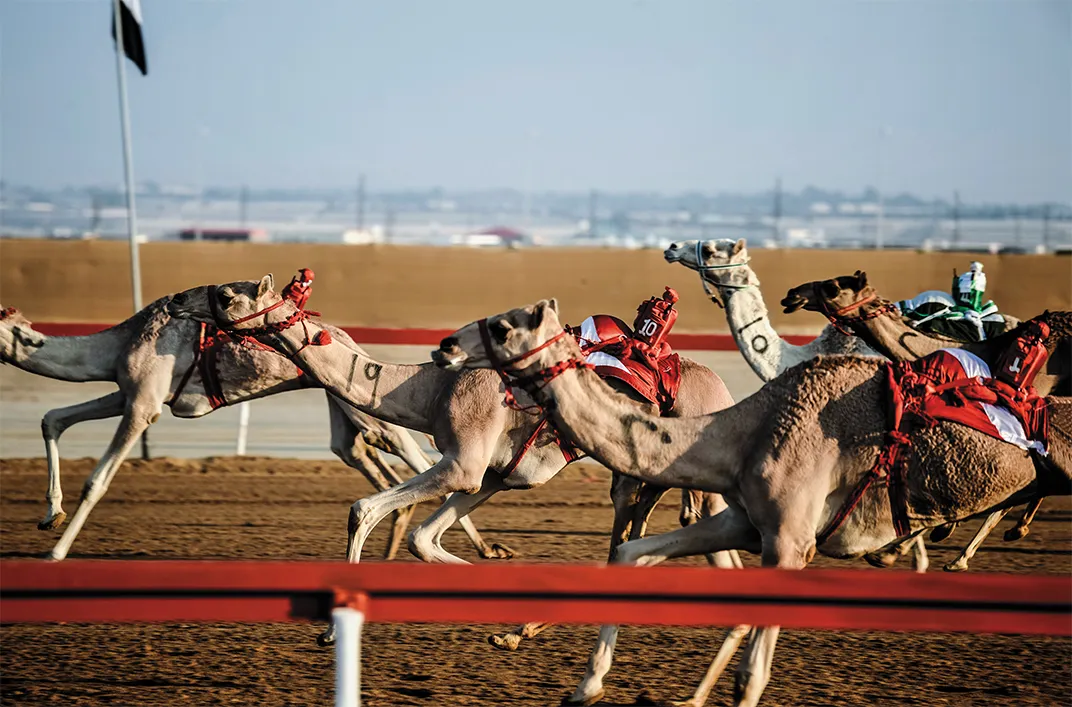The Latest Sign That the Robot Uprising Is Nigh? Camel Racing
A centuries-old pastime in the United Arab Emirates gets a reboot
Camel racing on the Arabian Peninsula dates to the seventh century, but not long ago the sport underwent a MacGyver-like upgrade: robot jockeys, retrofitted from cordless power drills and dressed in uniforms. British photojournalist Andrew Testa captured this race in Abu Dhabi. As the camels galloped at up to 40 miles per hour, he heard the whoosh of the robots’ remotely controlled whips, two-foot strips of plastic attached to the drills’ motor. The animals’ owners sped alongside in SUVs, muttering encouragement through two-way radios. Camel racing has a troubled past. Child slaves often served as jockeys until the UAE outlawed their use in 2002, which led to robots becoming the industry standard, and though some critics might object to the whips, defenders argue that the practice is no different from horse racing. Testa was drawn to the chance to capture a quirkier side of a region frequently seen through the prism of conflict. “It is a really bizarre spectacle,” he says.
/https://tf-cmsv2-smithsonianmag-media.s3.amazonaws.com/accounts/headshot/amy.png)



/https://tf-cmsv2-smithsonianmag-media.s3.amazonaws.com/accounts/headshot/amy.png)